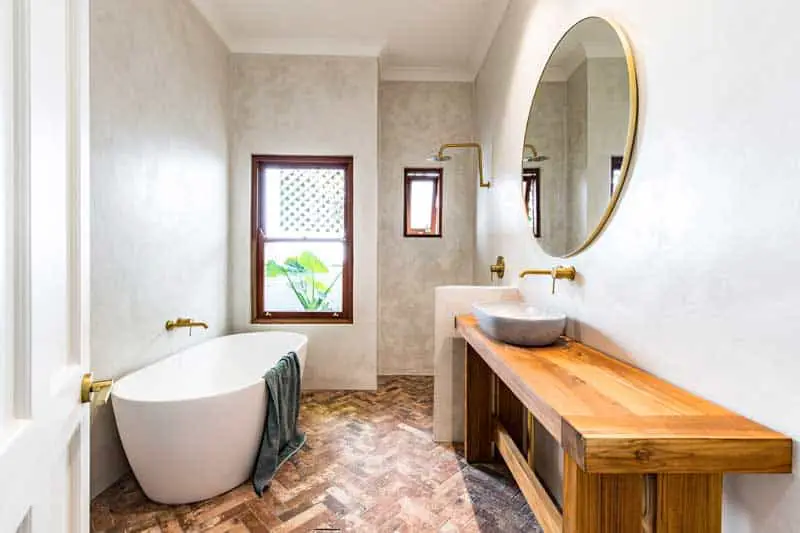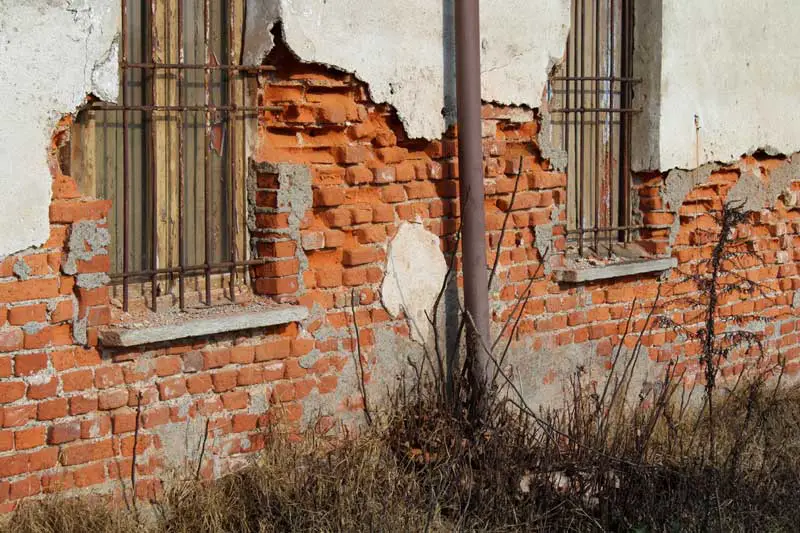
Common questions when working with lime plasters are around their breathable nature. Many lime plasters have been replaced with cement and gypsum in old buildings, leading to damp and trapped water issues. So do lime plasters help to prevent dampness?
Lime plaster and render help to draw moisture out of places that it shouldn’t be and expel it without causing damage to the building. Generally speaking, lime plasters, especially when putty based, are fantastic at controlling moisture in buildings. Over time, lime plaster can help remove any trapped water causing damp issues. If you use lime plasters to help combat damp issues, use breathable paints. Otherwise, the water will remain trapped.
Now we can see that lime plasters effectively combat damp issues; let’s take a deeper look into how lime plasters can help solve this frustrating issue.
How Does Lime Plaster Prevent Damp?
Lime building materials have high porosity and high permeability, known as breathability. This allows lime plaster to both absorb and evaporate water. Any trapped water behind the plaster can be absorbed and expelled away without causing any damage. Non-breathable materials would trap the water, which leads to moisture damage and the breakdown of building materials like wood, stone, metal and brick.
Because the lime plaster wicks the water to its surface where it can evaporate, any harmful salts get left behind on the plaster and do not get trapped on the masonry. Salts can damage building materials such as brick when they crystallise inside its pores. The force generated by the crystallisation is enough to cause a small amount of damage. Over time, the bricks would break down.
Lime plaster helps protect the masonry of buildings by evaporating the water. Water can sometimes contain harmful salts that get left behind on the plaster instead of damaging the masonry. Salts can usually be wiped off with a damp cloth. Then the area can be re-limewashed if it has stained or the colour has changed.
Try to Locate The Source of The Damp
It would be best to locate where the damp is coming from before replastering. Getting an expert to inspect it is usually best, but some damp problems can be easily identified. For example, a broken tile on a roof letting water in or a blocked drain causing water to back up and spill out. Fixing the issue and then plastering with lime will help to ensure the damp issue gets resolved and causes no further damage.
Whilst you can plaster over the damp area with lime plasters, it’s always best to try and fix the root cause of the water ingress. If you plaster over the damp area, the lime plaster will do its job and help alleviate the trapped water. However, you may find the wall appears darker than the surrounding area due to the higher moisture levels.

Related article: Can You Apply Gypsum Plaster Over Lime Plaster?
How to Make Lime Plaster For Damp Walls
Lime plaster is best made with mature lime putty (slaked quicklime), which is a good 3+ months old. It is essential to use mature putty with plastering. The longer it matures, the fewer drowned particles of lime there will be, which can cause pitting or blowouts. Once you have a mature lime putty, you need sharp-washed sand and possibly some horsehair or plastic fibres for the base coat.
Adding fibres can help increase tensile strength, which can help the plaster cope with any movement and flexing that may occur as the wall dries out. Sharp-washed sands are essential as they will create the best lime plaster. Sands which haven’t been washed can contain organic matter and silts, which will cause the plaster to become weaker. Sharp sands interlock on their jagged edges, which creates a much stronger bond than if round soft sand was used.
If a particular wall is constantly wet, putty-based lime plasters may not be able to carbonate fully. In this scenario, using a very mild hydraulic lime (NHL 2) to make the base coat of lime plaster would be necessary. Weak hydraulic limes set via hydrolysis, a reaction with water, in addition to carbonation. This will help the plaster gain an initial set in a very wet environment.
Mix Ratios And Sand Sizes For Lime Plasters
For the best results, 3-coat lime plaster work is best. The first coat is the coarsest and may contain plastic fibres or horse hair to help increase tensile strength. Usually, the first coat is around 6-16mm thick and uses a relatively coarse lime plaster at a ratio of around 1:2.5 lime: aggregate. The first coat can use sand 5mm down to 2mm down.
The second coat is used to help get the wall as perfectly flat as possible and removes any imperfections. This plaster is usually laid on around 13-16mm thick, depending on how uneven the wall or ceiling is. Similar plaster as the first coat can be used, but this coat shouldn’t have hair or plastic fibres in it. Sands from 4mm down to 1mm down can be used for the second coat. A similar ratio of 1:2.5 will work well for this coat.
The 3rd coat, called the ‘skim coat’, should be fine putty plaster. Hydraulic limes do not perform well with very fine materials. The lime skim should use 1mm down to 150-micron aggregates. The finer the sand, the smoother the finish that can be produced. A ratio of 1:1 to 1:2 of superfine lime putty: super fine sand is often used. Common lime used for this purpose in the UK is Buxton superfine putty.
Please note this is a general guideline; it’s always better to speak to your local lime supplier about specific plasters for your project.
Related article: Should Lime Plaster or Render be Sealed?
What is The Best Plaster For Damp Walls
There are many different types of plaster to help combat damp walls. Many work by creating a waterproof barrier which traps the water behind the plaster. I think this is far inferior to using a breathable material such as lime plaster or render.
Trapped water, as we have discussed, can cause severe amounts of damage to buildings. Allowing this water to be soaked up and evaporated by a material like lime plaster is an effective way of removing the water without causing damage. As trapped water builds up, it can damage waterproof plasters causing them to crack and fall apart. Not to mention that freeze-thaw cycles can impact the structural integrity of the walls in question.

